What does B2B lead generation look like in 2023?
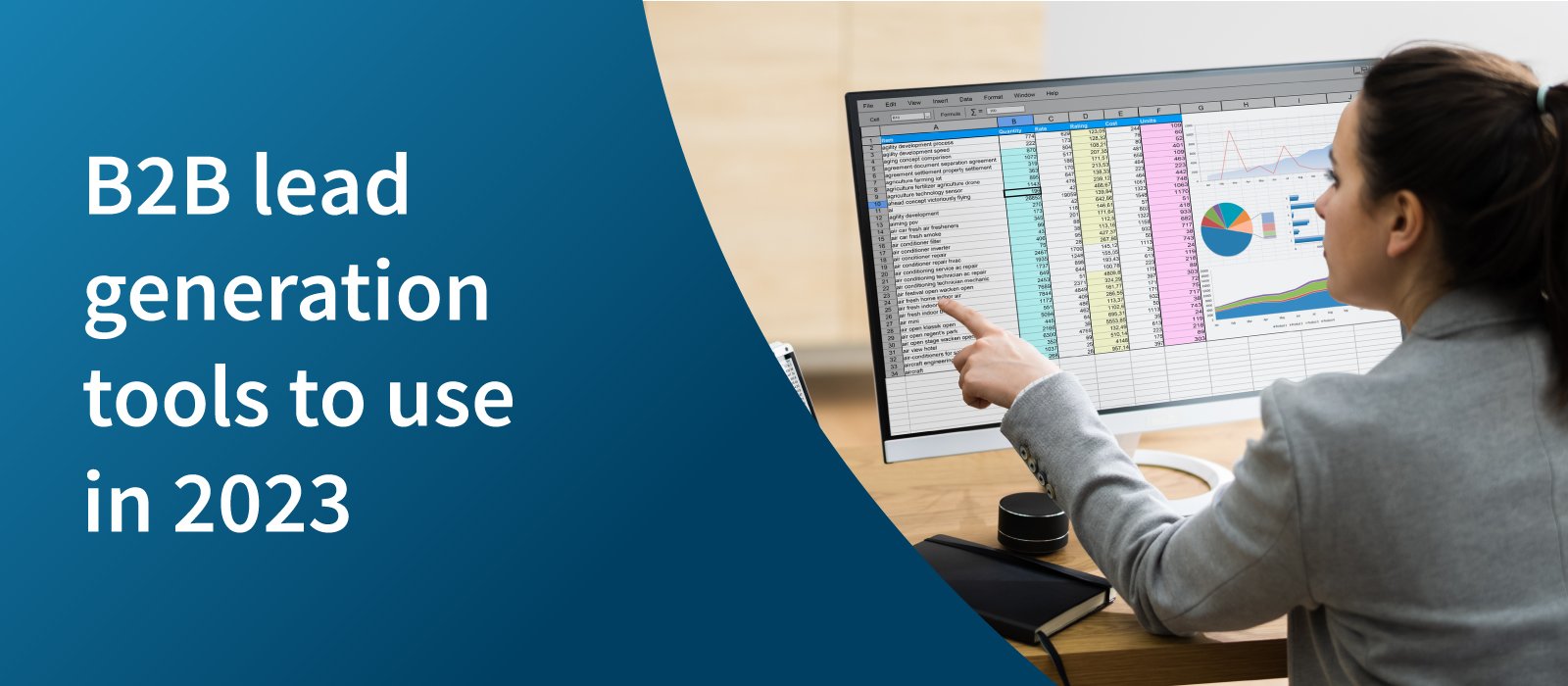
The business-to-business (B2B) landscape has shifted with the emergence of multiple touchpoints, channels, and digital selling strategies, pushing marketers to deliver bottom-line results or risk losing their budgets. Today, the most successful companies are those that can build an effective B2B lead generation funnel that easily converts prospects into paying customers.
However, not every business is equipped with the resources to generate enough leads to enable growth. As more organisations struggle to turn visitors into leads and prospects, there’s never been a better time to adopt an omnichannel marketing approach that truly delivers results.
But what is omnichannel marketing, and how can it help generate B2B leads?
Omnichannel marketing is often confused with integrated marketing as both aim to create customer-centric experiences. However, there are subtle differences between integrated marketing vs omnichannel marketing, with the biggest nuance being application.
An omnichannel approach to digital marketing aims to use as many channels as possible to reach out to prospects and have personalised interactions with them. The benefits of omnichannel marketing include increased brand awareness, higher conversion rates, and improved customer loyalty.
The future of omnichannel lead generation is poised to be heavily reliant on data-driven, artificial intelligence (AI)-powered strategies. Emphasis will also be placed on automation and optimisation, with a multichannel approach that prioritises hyper-personalisation.
Read on to discover the most effective B2B lead generation tools to grow your prospects in 2023 and beyond.
B2B lead generation with marketing automation

Generating strong leads is a crucial aspect of driving business growth. In fact, most omnichannel marketing campaigns focus on generating more leads, which leads to potential opportunities and more customers.
While the process is crucial, lead generation can be time-consuming and requires a lot of resources. Furthermore, if your leads aren’t nurtured, your efforts may prove futile.
However, there is good news: marketing automation makes your B2B lead generation easier and faster. By using automation to streamline the marketing and sales journey, you can focus more on overall strategy development. Plus, you can nurture leads that show real promise, which results in more potential prospects.
Some of the best marketing automation systems for generating qualified leads include:
- Hubspot
- Marketo
- SharpSpring
- Pardot
- RD Station
- Zoho.
There are several reasons why businesses should use marketing automation tools for lead generation:
- automate repetitive tasks and processes, letting you focus on more strategic tasks
- create and deliver personalised content and messages to leads and prospects
- lead scoring and nurturing capabilities to help you identify and engage with the most qualified leads
- track campaign performance and collect data about leads and prospects
- integrate with other software, such as customer relationship management (CRM) systems and web analytics tools, to have a better understanding of leads, prospects, and customer behaviour
- handle high volumes of leads and prospects as your business grows and expands its customer base.
Overall, the use of marketing automation tools can help you generate more B2B leads, increase efficiency, and improve the overall performance of your omnichannel marketing campaigns, ultimately driving revenue growth.
Lead generation and content marketing
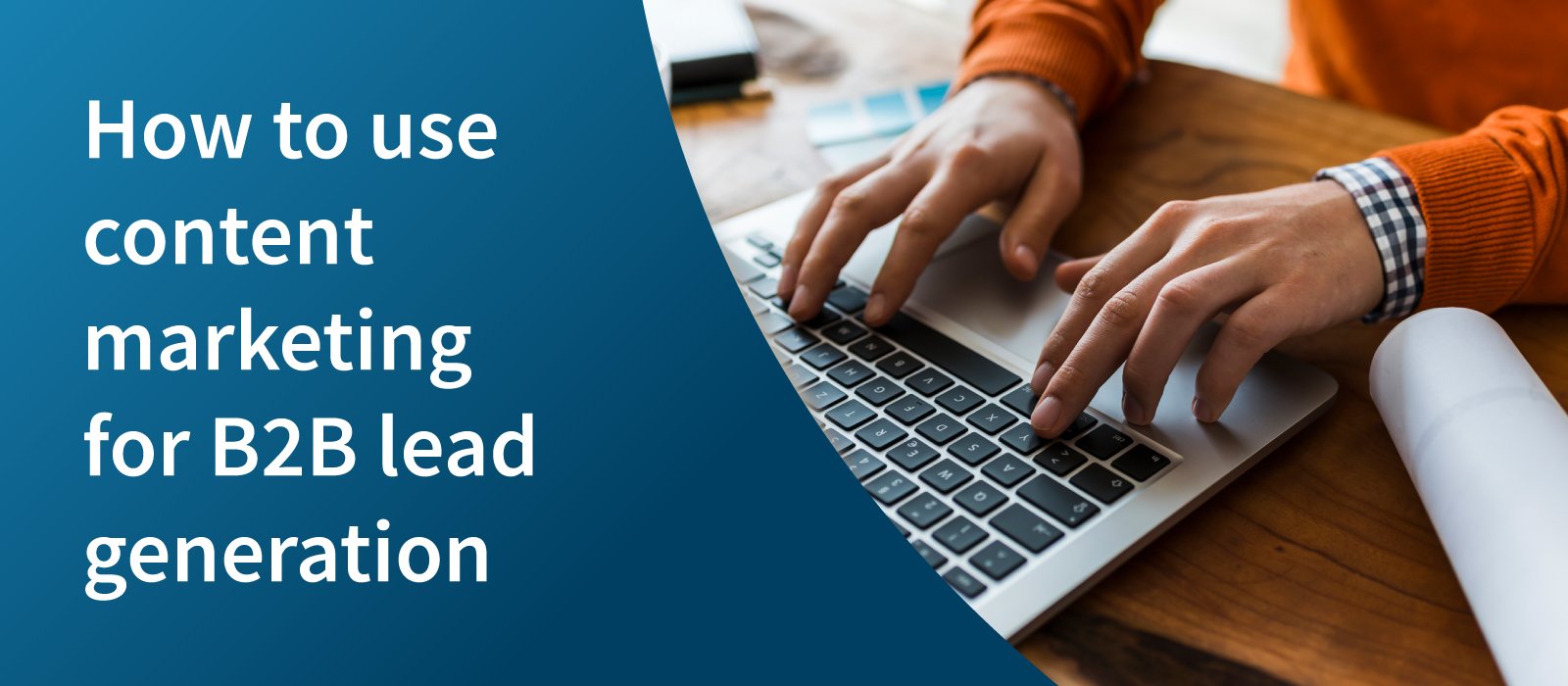
Have you been using content marketing as a method of generating leads? If not, you may be missing out on attracting more qualified leads and gaining targeted website traffic. A well-crafted B2B content marketing strategy will not only attract more website traffic, but it will also position your business as an industry expert; however, this means that you need to create and share high-quality written content.
To meet your marketing objectives and secure the right B2B leads, consider some of the popular and most used methods for a successful B2B content marketing strategy:
- Blog posts and articles
Informative, well-written blog posts and articles can secure B2B leads by providing valuable information that demonstrates your business’s expertise and thought leadership in a specific subject in your industry.
By consistently creating high-quality, informative content that addresses the needs and pain points of potential customers, you can establish trust and credibility with your target audience. In addition, calls-to-action (CTAs) that encourage readers to take specific actions, such as filling out a contact form or booking a consultation, can also generate leads.
- Case studies
Case studies provide potential customers with a tangible example of how a company’s services or products have been successfully used to solve a real-world problem. By demonstrating how your solutions have helped other businesses address their pain points, you can build credibility and trust with potential customers.
You can offer case studies as a download in exchange for contact information, share them on social media platforms to help increase your company’s visibility and reach, or include them in your email nurture campaigns to help build trust with your prospects and move them through the sales funnel.
- eBooks and white papers
eBooks let businesses provide in-depth information on a specific topic in a format that is easy for readers to consume and share. By creating valuable, informative eBooks that address the customer pain points and needs of your target audience, you can establish your company as a thought leader and expert in your field.
At the same time, white papers are used to inform and educate stakeholders, clients, or top-of-funnel traffic. They are typically more detailed than blog posts and eBooks, and often include statistics and other research to support the information presented. Because they provide a high level of detail and authority, they can be a strong B2B lead generation asset and position your company as an industry leader.
Generate leads through interactive content
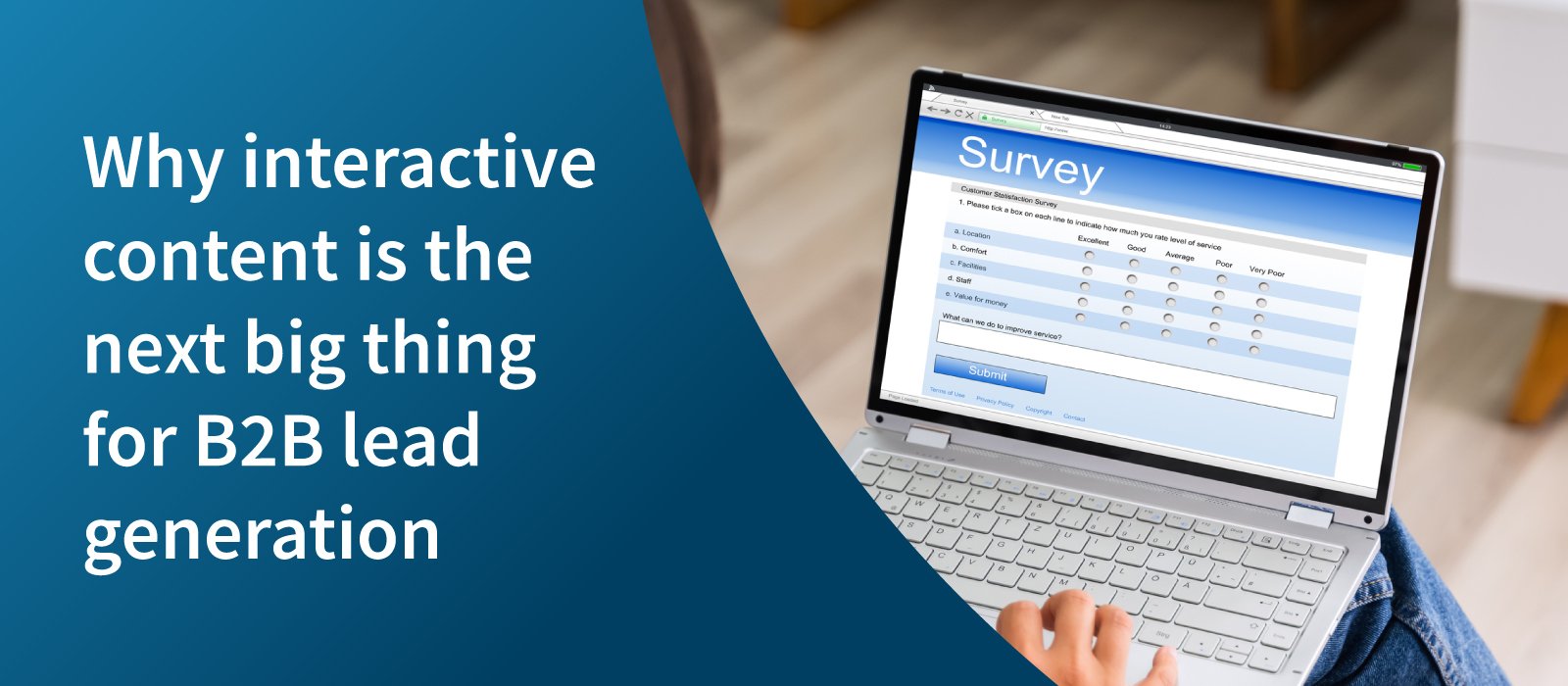
As marketers, we’re always looking for more effective ways to attract, engage, and convert customers. While video content has done most of the heavy lifting in the past, an even better way to generate leads is by using interactive content.
In today’s digital era, audiences are accustomed to quickly browsing and finding the information they need through a series of swipes, taps, and clicks. That’s why it’s imperative for your content to be able to grab and hold your audience’s attention, as failing to do so will result in missed leads.
AI-generated tools, such as ChatGPT, can be used to assist with content production and enhance interactive content to make it more personalised, engaging, and informative, which could ultimately help drive B2B lead generation.
The goal of interactive content is to provide a more engaging and compelling experience for your audience that will hold their attention and keep them interested in your business’s offerings.
The five types of interactive content your B2B tech customers will find useful include:
1. Calculators
Results from return on investment (ROI) calculators should jump directly from your calculator to your reader’s proposal. With a couple of clicks, your reader can show their team projected returns for using your product or service. Remember, practically any benefit that scales can be brought to life in a calculator. If your collateral includes any calculators in spreadsheets, consider turning them into online calculators for your customers.
2. Interactive infographics
To convey cohesive stories, it helps if your infographic gives readers clear message hierarchies. One way to step readers through primary and secondary benefits is to simply mask some of the information with hotspots. Suddenly your readers’ eyes can relax, and they can play with the interactivity instead. Perhaps hide an ‘easter egg’ in your interactive infographic and challenge your readers to find it. For example: Discover how to improve user experience on the page in our latest infographic.
3. Quizzes
For B2B tech audiences, quizzes let your brand quickly convey how to solve a particular problem. They are particularly handy if you have a complex product portfolio that your audience needs to drill through. As a call to action, “take our quiz” is compelling: it promises a challenge and the chance to personalise results, so it’s much more engaging than a promise of a brochure or datasheet.
4. Infographic quizzes
Another trick is to combine an infographic with a quiz. Populate your infographic with sliders and multiple-choice questions alongside your facts and stats. To avoid information overload, spread your interactive experience over several frames.
5. Self-assessments
Because they relate directly to helping your readers build business cases, self-assessments in various forms are perennial content marketing favourites. Invite your readers to assess their existing solution and compare it with your solution.
Provide a checklist that summarises your solution’s key benefits. A parallel column lets readers check whether their existing solution supplies the same benefits. Make it easy for your readers to print and save their results so they can add their assessment to a proposal, business case, or project folder.
Using social media to capture prospects
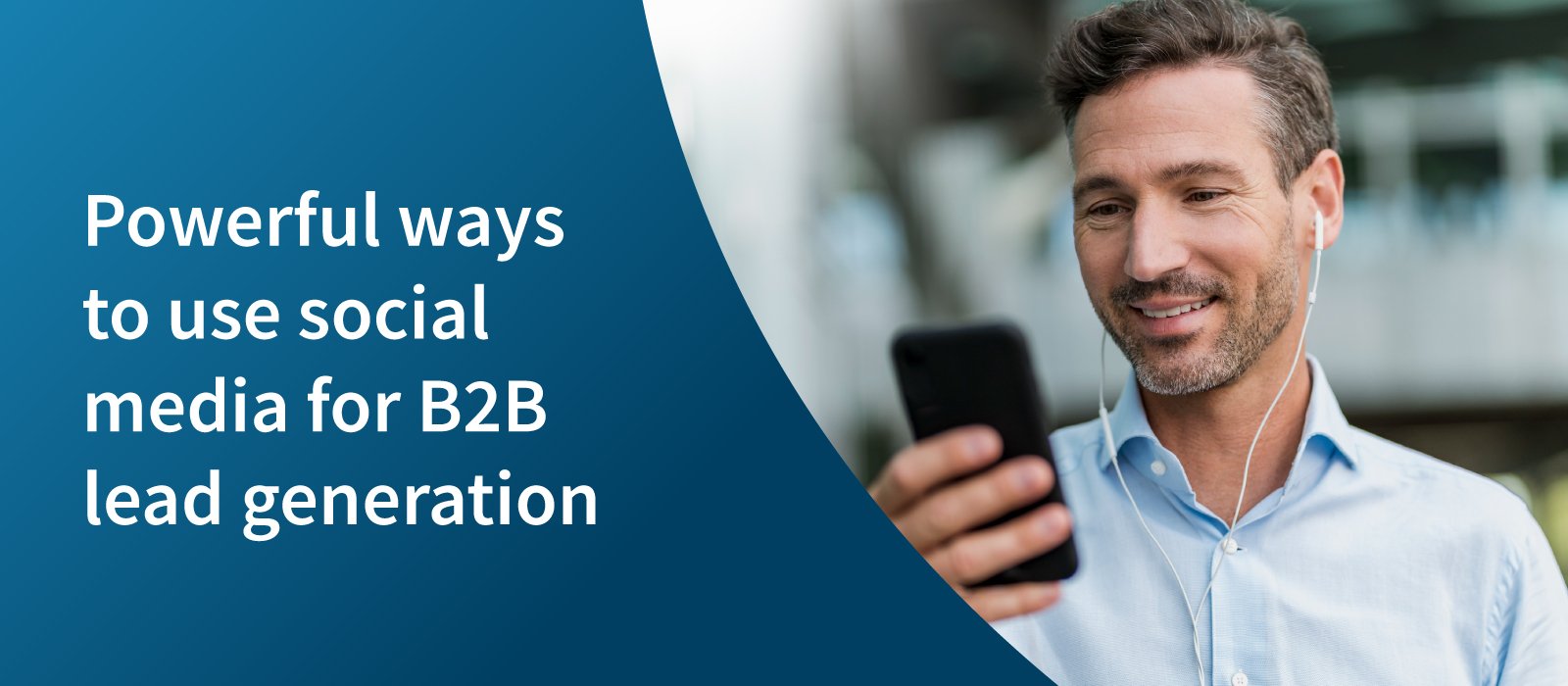
To excel in today’s competitive marketplace, a comprehensive B2B lead generation strategy with several moving parts is necessary if you want to remain successful. One important aspect of your omnichannel marketing strategy is social media. It’s the digital age, and it’s time for companies to recognise that their potential customers are likely on social media platforms.
Incorporating social media as a tool to generate leads lets you improve awareness for your brand while simultaneously connecting with prospects and growing your social media traffic. This lets you boost existing leads and improve engagement with potential customers while nurturing more leads.
These are just some ways you can use social media for B2B lead generation:
- LinkedIn articles
Content is critical when it comes to generating qualified leads and converting them. If you post content that is relevant and includes high-ranking keywords, visitors will keep coming back to your profile page. Better yet, if your content is engaging, it will motivate your visitors to like, comment, and share it with their own networks, increasing your company’s exposure.
- LinkedIn groups
LinkedIn groups provide a platform for professionals in similar fields to connect and exchange ideas about their shared interests and experiences. By joining groups where your prospects are active, you can identify and generate leads. As a member, you can share your knowledge and expertise with other members, address the pain points of your leads, and help them find solutions through the valuable content you post regularly.
- Paid campaigns
While maintaining an organic social media presence is important, it also comes with its limitations. This is where paid social media campaigns play a significant role in B2B lead generation as a highly effective channel for promoting your company. In fact, 80 per cent of Australian small and medium enterprises (SMEs) consider paid social media advertising as a beneficial advertising tool.
Most social media platforms provide advanced targeting options at an affordable cost, letting you generate high-quality leads without breaking the bank. Different types of paid social media advertising include pay-per-click (PPC), influencer-generated content, LinkedIn thought leader ads and Google display ads.
- Social media listening
Social media listening involves keeping track of channels for any references to your brand and lets you engage with users who are discussing your business. By actively monitoring social media at least once or twice a day, you can stay informed about your online presence as well as trends related to your company, industry, and competitors. This will only help strengthen your offerings and support in capturing new leads.
By using a combination of these tactics, you can effectively use social media to generate B2B leads and grow your customer base.
Best B2B lead generation tools and tactics to increase your sales and scale your business
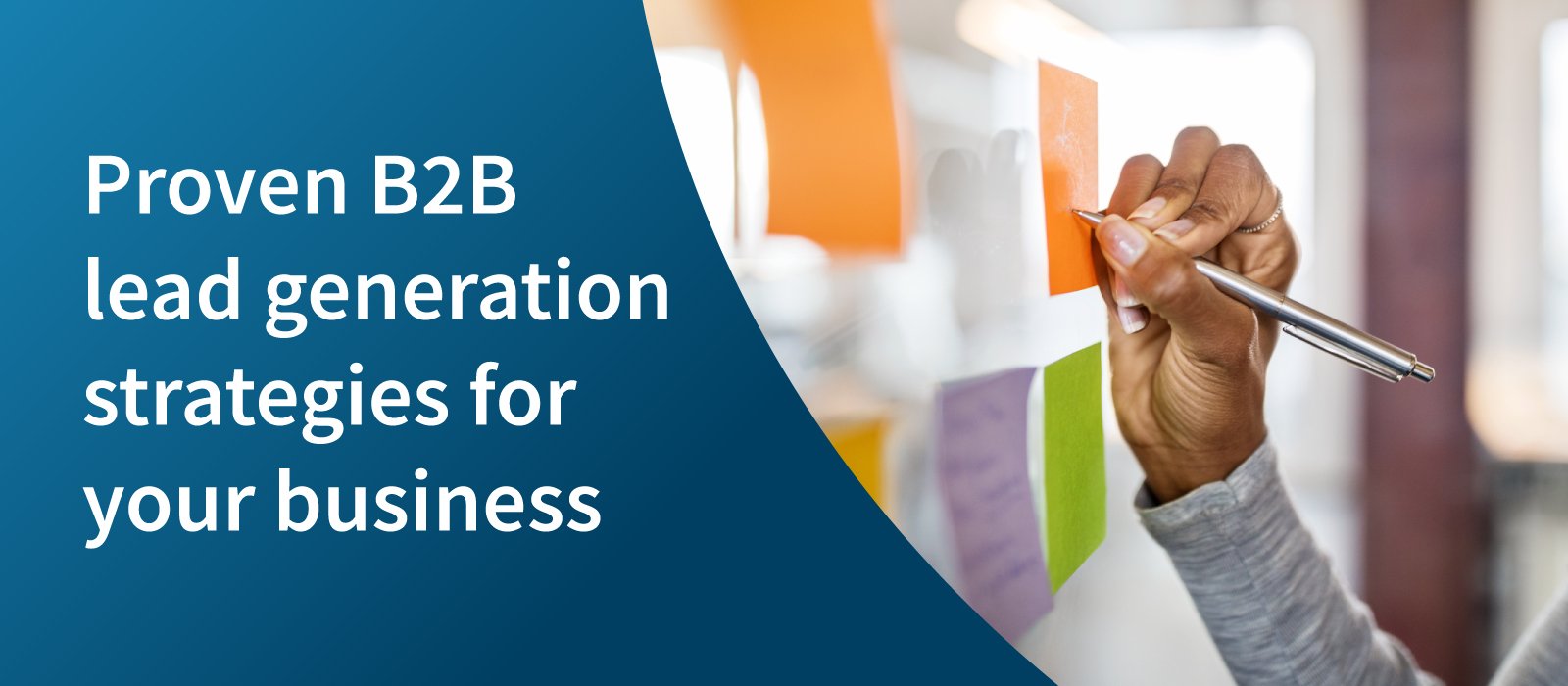
We may already be in 2023, but it’s never too late to plan your next omnichannel lead generation game plan. Leveraging the best strategic tools makes it easier to convert your visitors into leads and customers, and help you fill your sales pipeline.
An effective strategy can greatly contribute to achieving exceptional outcomes and fostering long-term sustainable business growth. A marketing agency that specialises in B2B lead generation services can help your business identify and connect with potential prospects, thus facilitating the growth and success of your company through effective lead nurturing strategies.
Outsource B2B marketing offers a full suite of marketing services designed to help your business get integrated campaigns without the complexity, cost, and inefficiency of managing multiple agencies. Our lead generation services include social media management, targeted LinkedIn campaigns for B2B audiences, search engine optimisation (SEO), marketing automation, Google ads, advertising and media plans, and more.
Grow your prospects and increase their interest through lead nurturing, book a free consultation with our B2B lead generation specialists today.












